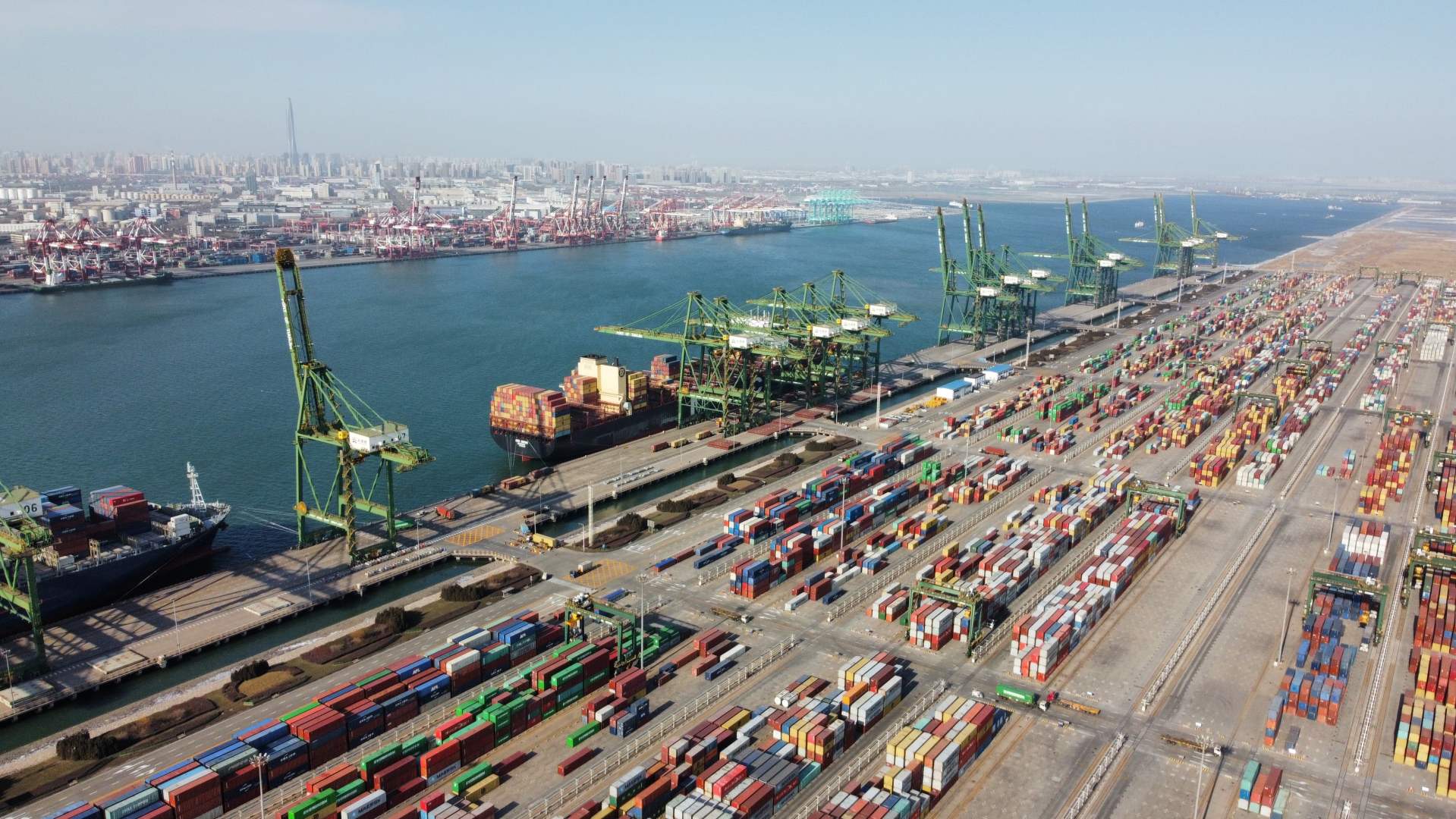
Commentary
-
Our commentary partners will help you reach your own conclusions on complex topics.
Hey everybody hello from snowbound, Colorado where it was 60 degrees yesterday it will be 60 degrees tomorrow. The the news of last couple of weeks on the economic front has been from the International Monetary Fund, which is that big international lender that helps countries get out of trouble. They are arguably the best of the world when it comes to do an economic forecasts. And the most recent forecast is the least optimistic one they’ve had in the last 50 years. Specifically, they think that growth next year on average for the world is going to be 2.8%. And for the next five years, only 3%. And honestly, they’re probably be in significantly over optimistic. So let me kind of give you it from three points of view. So first of all, from the developer’s point of view, the rich world, the rich world, most economic activity comes in the form of private consumption, you run your credit card, buying a house, going to college, raising kids buying a home, all that good stuff. Problem is that most of that activity is done by people under age 50. And with mass urbanization, starting in most places around 1940s 1950. We’ve seen lower and lower and lower birth rates throughout the rich world, there is no country that is an exception to that. And in many cases, replacement population growth would be 2.1 children per woman, you know, most of the advanced world dropped below that rate over 50 years ago. Well, you have fast forward 50 years. And it’s not that you’re running out of children. That happened a long time ago, you’re now running out of working age adults, specifically, the baby boomers were the last very large generation born in most countries. And on average, the baby boomers entered retirement last calendar year. So the rich world for in most cases, will never ever be capable of generating the economic growth I have in the past. And in fact, it’s probably a little worse than that. Because when you stop having kids, people still get older. And so when you have a lot of 30 Somethings, but not a lot of 10 year olds, those 30 Somethings are spending money on themselves on cars and condos as opposed to diapers. And that sort of economic growth is a lot more has a lot more octane to it. And that’s what we’ve seen in say Europe in the 1990s and 2000s. Well, they’re never going back to that they can never go back to that that’s statistically impossible. Okay, so secularly lower growth rates in the rich world, it’s pretty much going to be the norm for at least the next 40 years. Second, the developing world. Now the key thing that separates the rich world from the developing world is that the developing world isn’t as rich, you know, pretty self explanatory there. And they need a lot of capital in order to develop their systems. The rich world is the rich world because they have favorable geographies. And it’s been easy for them to trade with the world trade with one another and build infrastructure because things are relatively flat and open and rain falls from the sky to grow crops, all that good stuff. Most of the developing world lacks one or more or all of those characteristics. And so if you want to develop, you have to have the cash coming from somewhere else. And that somewhere else has traditionally been the rich world that money is no longer available. And even if it was, it would be going to pay for pensions and health care for an incredibly large and increasing in size, retired class of people. So the developing world doesn’t have the money that it needs to build infrastructure or to develop consumer markets. So without that input, the most important input for the developing world, you are looking at a secular stagnation that will last until that capital can be generated some where else. So not only is the rich world looking at lower growth rates for at least the next generation, so is the developing world. And then, of course, there’s China. Now, the Chinese, as you know, tend to live out all their statistics, but they have managed to sustain growth rates above that of the rest of the world for some time. Now in the rich world, typically 2% is considered kind of middle of the road. In the developing world, it’s usually in the 47% range. And for most of the last 40 years, the Chinese have been above 8%. And even if you consider that you can’t trust all of their data, they’ve certainly been on the high end of the poor side of the world in terms of growth rates. And now they’re thinking that, you know, 4% may be as good as it’s going to get. In many ways, what the Chinese are dealing with is the worst of all worlds, like the developed world, they are facing a demographic bomb, that’s actually a much steeper decline than any other country in the world. This is a country that absolutely is going to get old before it gets rich and reaches first world living standards. So this type of consumption led growth that we’re used to seen can’t happen, and the export growth that they use to sell products to the rest of the world can’t happen because that requires growth elsewhere. Second, that the Chinese have followed developing world paradigm to a certain degree in throwing a lot of cash at projects, especially infrastructure, make it work well China already has a great infrastructure now. And as the Japanese discovered in the 90s in the 2000s. If you already have a good infrastructure, and you build more infrastructure, Sure, you don’t get more economic growth, except for from, you know, the development of that infrastructure itself, it doesn’t do much follow on because there’s no need for it, while the Chinese have been doing this year after year after year for decades now, and they now have a debt load of probably about 300 350% of GDP, which again, world record. And they’re just not capable of sustaining that long run. And then third, and most importantly, the single most important factor behind Chinese success these last several decades has been de facto American sponsorship to allow the Chinese to have risk free, secure, and above all, cheap access to the world’s energy markets, raw commodities, markets and consumer markets without them having to lift a finger. That’s clearly not in the cards anymore. So every aspect of growth for most every corner of the world looks like it’s going to be lower for quite some time. And the IMF forecast is probably over optimistic. What we’re dealing with is the unwinding of the globalized world from both a geographic and a demographic point of view. And that was always going to generate low growth rates. Now, low on average does not mean low everywhere. We’re seeing a lot of nearshoring reshoring, French, Oregon as countries want to move manufacturing capacity, particularly for critical materials, and critical technologies back home. So they’re not vulnerable to say, I don’t know, a genocidal dictatorship. That will be growth stories in those places. But by definition, that manufacturing capacity will not be global. So it’s a bit of a global starvation diet from a growth point of view. So for every place where you have a Vietnam or Mexico the United States will do very well in this environment. You will have a China and Korea and a Germany that goes down the tubes. And that’s just where we are now. Okay, that’s it for me. See you guys next time. Bye.
-
Hurricane Helene hits US coast, Appalachia and beyond
Hurricane Helene hit Florida and Georgia overnight between Sept. 26 and 27 as a Category 4 hurricane, and accompanying storms will continue reaching deeper into the continental United States today. Dangerous flash flooding from the hurricane, known as storm surge, was some of the worst flooding that the Tampa Bay area has ever seen, and… -
Israel holds upper hand against Lebanon, Hezbollah and Iran
On Wednesday, Sept. 25, Hezbollah launched a ballistic missile at Tel Aviv in retaliation for Israel’s explosive pager attack that blew up devices across Lebanon. Although Israel’s defense systems intercepted the surface-to-surface missile, the attempted strike on Tel Aviv marked a significant escalation by Hezbollah. Since the siege on Gaza began, shortly after the Oct. 7, 2023,… -
The Sinaloa Cartel civil war
Fears of a civil war within the Sinaloa Cartel are growing as violence between competing factions within the cartel continues. The Mexican Army has dispatched around 600 elite troops to Sinaloa to help quell those fears, in addition to roughly 2,200 regular soldiers and National Guard. Watch the above video as Straight Arrow News contributor… -
New Ukrainian weapons hit Russia where it hurts
Ukrainian drones struck a major Russian ammunition depot, triggering a massive explosion that was captured on camera. According to the Ukrainian military, 2,000 tons of munitions had arrived at the depot before the attack. Over the past two years, Ukraine has significantly increased its domestic drone production, allowing it to scale up attacks on military… -
Weighing social costs vs. economic benefits on immigration
Global human migration is one of the defining elements of our current historical era, according to the United Nations. Migrants face both the incentives to leave — forced out by climate change, crime and corruption, extreme poverty or violence — and incentives for where to go, based on available job opportunities and so on. Migration…
Latest Stories
-
 Getty Images
Getty Images
Putin says he will facilitate negotiations between Trump, Iran: Report
-
 Dept. of Defense
Dept. of Defense
A return to the Cold War? UK poised to house US nuclear weapons yet again
-
 Getty Images
Getty Images
Melania Trump backs ‘Take It Down Act’ targeting AI deepfake, revenge porn
-
 Getty Images
Getty Images
Top FBI official in NY retires amid apparent conflict with Trump admin
-

How US crypto holdings compare to other nations
Popular Opinions
-
In addition to the facts, we believe it’s vital to hear perspectives from all sides of the political spectrum.
Latest Opinions
In addition to the facts, we believe it’s vital to hear perspectives from all sides of the political spectrum. We hope these different voices will help you reach your own conclusions.
The opinions published in this section are solely those of the contributors and do not reflect the views of Straight Arrow News.





















Latest Commentary
We know it is important to hear from a diverse range of observers on the complex topics we face and believe our commentary partners will help you reach your own conclusions.
The commentaries published in this section are solely those of the contributors and do not reflect the views of Straight Arrow News.
Dr. Frank Luntz
Pollster and Political Analyst‘Biased’: What Americans think of ‘mainstream media’
‘Getting rid of them’: Americans discuss Trump and immigration
‘Woke’: Why some Biden 2020 voters backed Trump in 2024